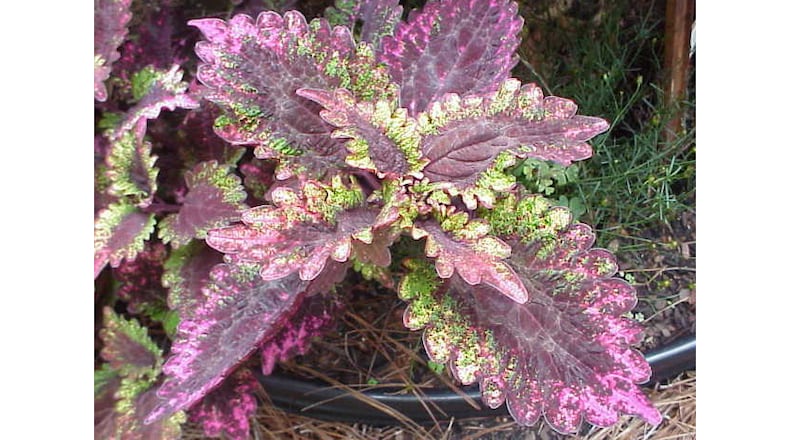Q: Can I grow some of my coleus inside in a pot through the winter? I believe that they’ll do well inside. My mama and grandma said they would. Helen Hadden, Haralson County
A: Coleus foliage is gorgeous in fall. It seems a shame to lose all that color due to cold weather, so the instinct to bring them inside is understandable. But it’s hard to give them enough light. Without sufficient light, they get leggy and sprawl over anything nearby. If you’re driven to try, start with plants that have not flowered since flowering retards new growth. Put your coleus plants near the brightest window in the house, but set them back a couple of feet so they don’t get direct sunshine. Fertilize very lightly, perhaps a quarter of the recommended amount. If they’re still somewhat attractive by spring, give them a light pruning to shape and set them out. If this is not successful, next fall try rooting cuttings in jars of water. When I was a kid, all manner of cuttings adorned our kitchen window; coleus, impatiens and geranium were favorite plants for my mother to root.
Q: A few weeks ago, I cut my four eggplants to about 4 inches above the soil. They have begun to sprout leaves on the remaining stem, but they have not grown taller. If I protect them with some type of cloche, is it possible that they would grow and produce eggplants next summer? Joy Chanin, email
A: Yes, eggplant is a semi-perennial plant. Thus they will produce for two to three years if you don’t let them freeze. I don’t think a cloche, a small translucent cover for protecting outdoor plants, will protect them well enough. Eggplant is not very cold-hardy. You need to make a larger cover that will protect all four plants. A light bulb can be used to provide extra warmth. Let me know what happens!
Q: I grew both Seminole pumpkin and luffa gourds this year. They were close together, and the common wisdom is that I shouldn’t save seeds because the two plants may have cross-pollinated. However, they are different genera, so it seems to me that crossing should not occur. The pumpkin is Cucurbita moschata and the luffa is Luffa aegyptiaca (Luffa cylindrica). Kathryn Doubrley, email
A: These two species do not cross naturally. They will only cross within species unless some genetic engineering takes place. For example, Japanese diners enjoy ‘Tetsukabuto,’ an unnaturally crossed product of Hubbard squash and butternut squash. Luffa cylindrica will not normally cross with anything but Luffa cylindrica.
Email Walter at georgiagardener@yahoo.com. Listen to his occasional garden comments on “Green and Growing with Ashley Frasca” Saturday mornings on 95.5 WSB. Visit his website, www.walterreeves.com, or join his Facebook page at bit.ly/georgiagardener for his latest tips.
About the Author
The Latest
Featured

